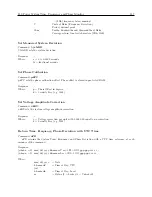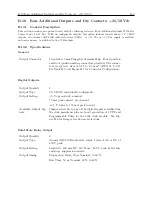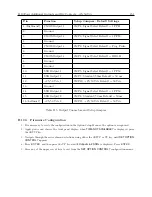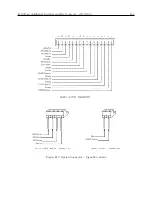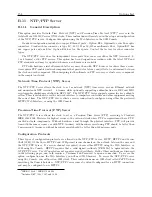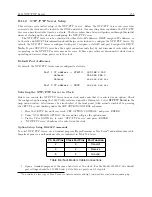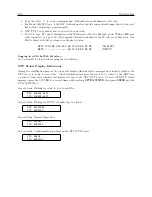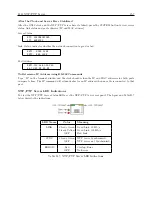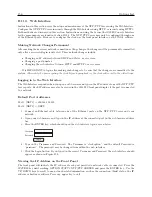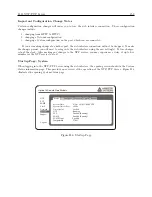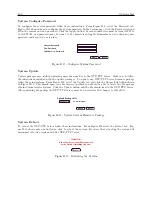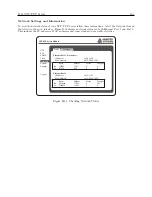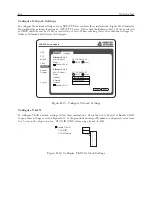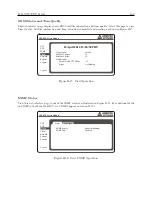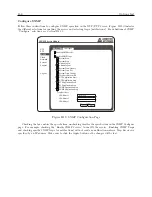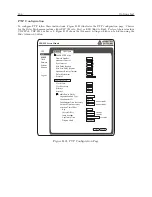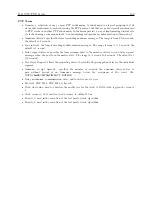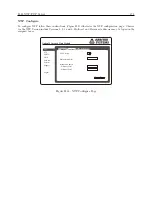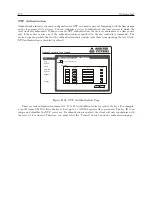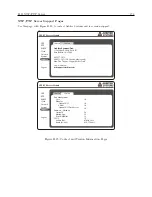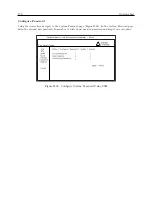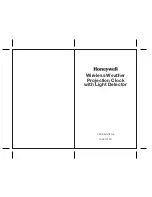
B.11 NTP/PTP Server
161
System Configure HTTPS Page
WARNING:
If you plan to install your own PEM file, generated from a private key and a self-signed
certificate, make sure to verify the PEM file before installation, or you could experience a denial of service,
and may need to return your clock for repair.
To configure the HTTPS page, follow these instructions. Figure B.10 shows how configuring for HTTPS
protocol opens up a dialog to upload a PEM file to the NTP/PTP Server system. After opening the System
Configuration page (shown in Section B.11.3 click the HTTPS button and it will open the PEM file dialog
shown in Figure B.10. A PEM file includes a private key and signed certificate. You can either purchase
one or generate one yourself. A discussion on generating a PEM file using a self-signed certificate in Linux
is located in Appendix C. OpenSSL is required to generate a PEM file in Windows 32-bit or 64-bit systems.
This same method also seems to work fine in the Mac OS X environment.
Notice that the port numbers have changed from 80 with HTTP to 443 with HTTPS.
Web Interface
HTTP HTTPS
Port 443
PEM File
Choose File no file selected
Upload
Figure B.10: Configure HTTPS
Enable Timeout (for Web Interface)
See Figure B.9. Check the box adjacent to “Enable Session Timeout” if you want the NTP/PTP Server to
automatically log off of the web interface after a predetermined number of minutes. Minutes are declared in
the adjacent box, from minimum of 3 to a maximum of 1440.
Console Interface
See Figure B.9. Check the box adjacent to “Enable Session Timeout” if you want the NTP/PTP Server to
automatically log off of the SSH Console interface after a predetermined number of minutes. Minutes are
declared in the adjacent box, from a minimum of 3 to a maximum of 1440.
Respond to Ping Requests
See Figure B.9. Check the box next to “Respond to Ping Requests” if you want the NTP/PTP Server to
respond to ping requests. Leave it unchecked if you do not want the NTP/PTP Server to respond to ping
requests.
Time Zone Setting
See Figure B.9. Values placed in this box are based on the POSIX format specification, and determine
the time zone offset from UTC, including any Daylight Saving Time offsets. In this example, PST8 means
Pacific Standard Time, which is 8 hours earlier than UTC. PDT7 means that Pacific Daylight Time is 7
hours earlier than UTC. For additional information on regional time offsets from UTC, see Section B.11.7.
Note that the clock time indicated when selecting the Clock tab is the local time of the NTP/PTP Server.
Summary of Contents for 1201B
Page 4: ...iv ...
Page 153: ...B 7 Four Fiber Optic Outputs 135 Figure B 4 Jumper Locations ...

